5 Animals Found Only in Latin America
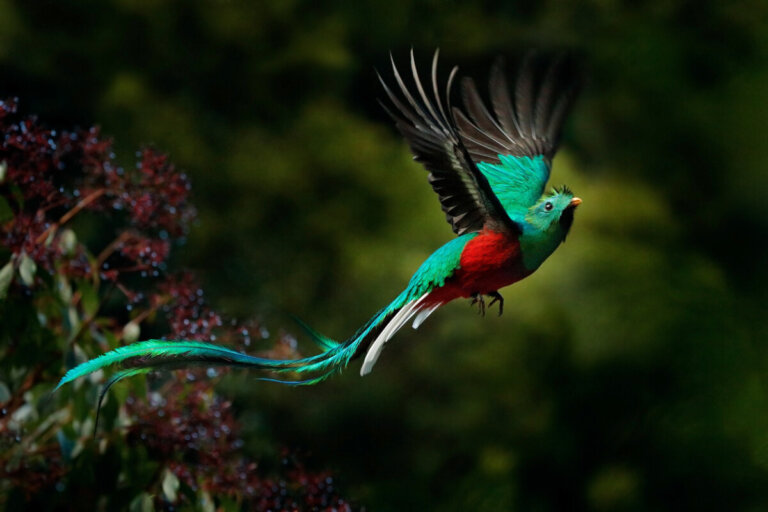
Latin America is known for its rich biodiversity, which is reflected in the wide variety of animal species that inhabit the region. From majestic felines to colorful birds, there are species found nowhere else in the world.
This is due to a combination of geographic, climatic, and environmental factors. Its tropical and subtropical location, as well as its variety of ecosystems, provide ideal conditions for diversity. Join us to discover five species of animals that can only be found in this region!
The diversity of Latin American regions
Latin American geography has four major regions with their particular characteristics:
- Rainforests: The Amazon rainforests – located mainly in Brazil – also extend to Peru, Colombia, and Ecuador. They’re the green lung of the planet. It’s estimated that about 10% of all known species in the world are found in the Amazon.
- Cloud forests: Such as those found in Costa Rica, Panama, and Ecuador. They’re home to a large number of endemic species, such as the resplendent quetzal.
- Coral reefs: In the Caribbean and on the coasts of Central America are found these homes of marine life.
- Andean páramos: Located in the high Andes of countries such as Colombia, Ecuador, and Peru, these are high mountain areas that are home to species adapted to the cold climate and lack of oxygen, such as the mountain tapir.
Five animals endemic to Latin America
Latin America has many endemic species, i.e. animals that developed only under certain conditions specific to the region. It would be impossible to name them all, so we’ll list five of the most striking.
1. The Resplendent Quetzal (Pharomachrus mocinno)
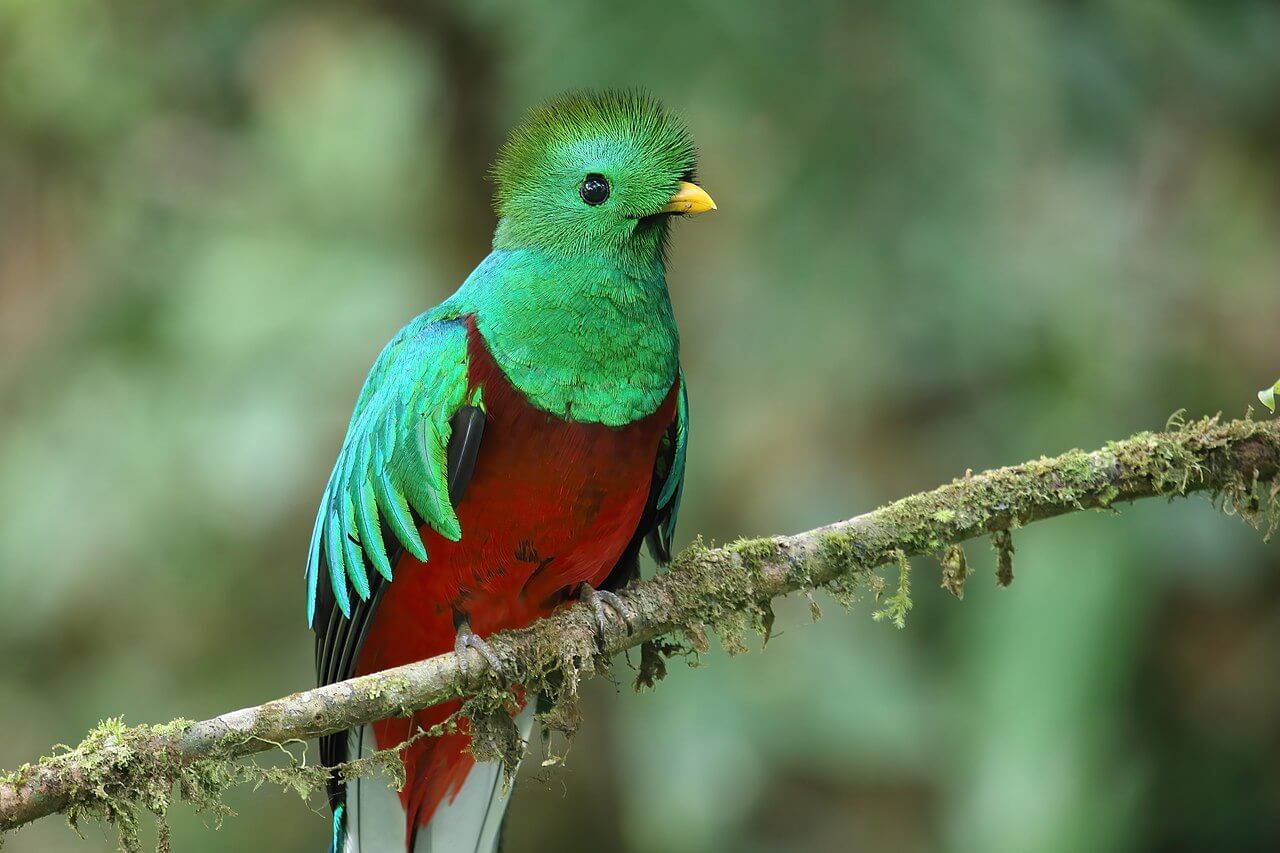
The resplendent quetzal is an emblematic bird of Central America, known for its stunning beauty and colorful plumage. This bird is found in the cloud forests of countries such as Guatemala and Costa Rica. According to the Revista Mexicana de Biodiversidad, its total distribution ranges from Mexico to Panama.
Its body is predominantly green, with a bright red breast. It also has extensive and elegant tail feathers. In fact, males can measure over 3 feet in length.
For centuries, indigenous cultures have venerated the quetzal.
This bird is also a symbol of freedom and spirituality. However, due to deforestation of its range and illegal hunting, the International Union for Conservation of Nature (IUCN) classifies it as a “near threatened” species.
2. Hyacinth macaw (Anodorhynchus hyacinthinus)
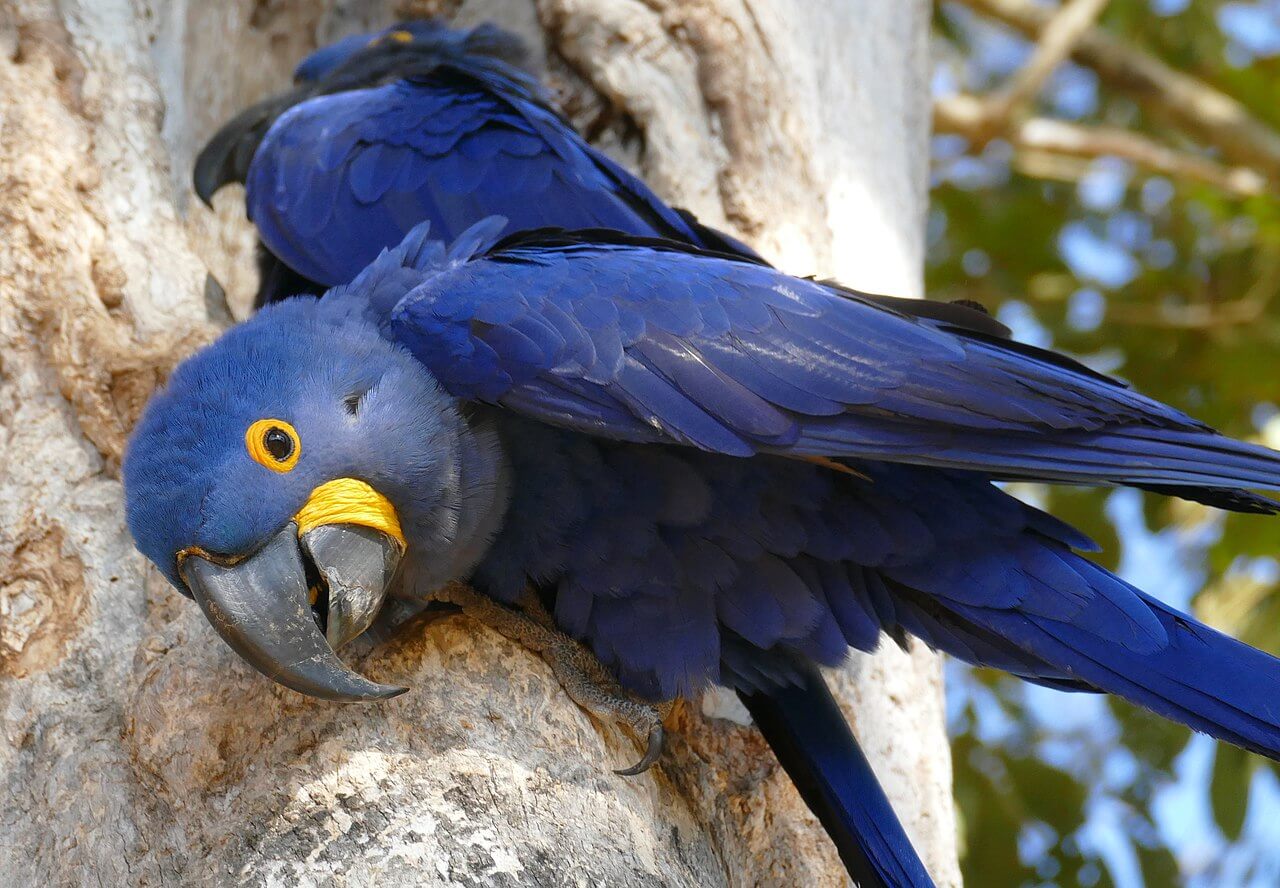
The hyacinth macaw is endemic to the Pantanal region of Brazil, although it’s also found in some areas of Bolivia and Paraguay. Its most distinctive feature is its deep blue plumage. This feature makes it a unique and recognizable species.
These macaws inhabit forests and swampy areas, where they find the predominant foods in their diet, including:
- Fruits
- Nuts
- Seeds
The destruction of their habitat and capture for the illegal pet trade have led to a serious decline in their population.
According to the journal Wetlands, forest fires also play a critical role in population declines. In view of this, the IUCN classifies this bird as a “vulnerable” species, and consequently, conservation measures have been put in place to protect its survival.
3. Ocelot (Leopardus pardalis)
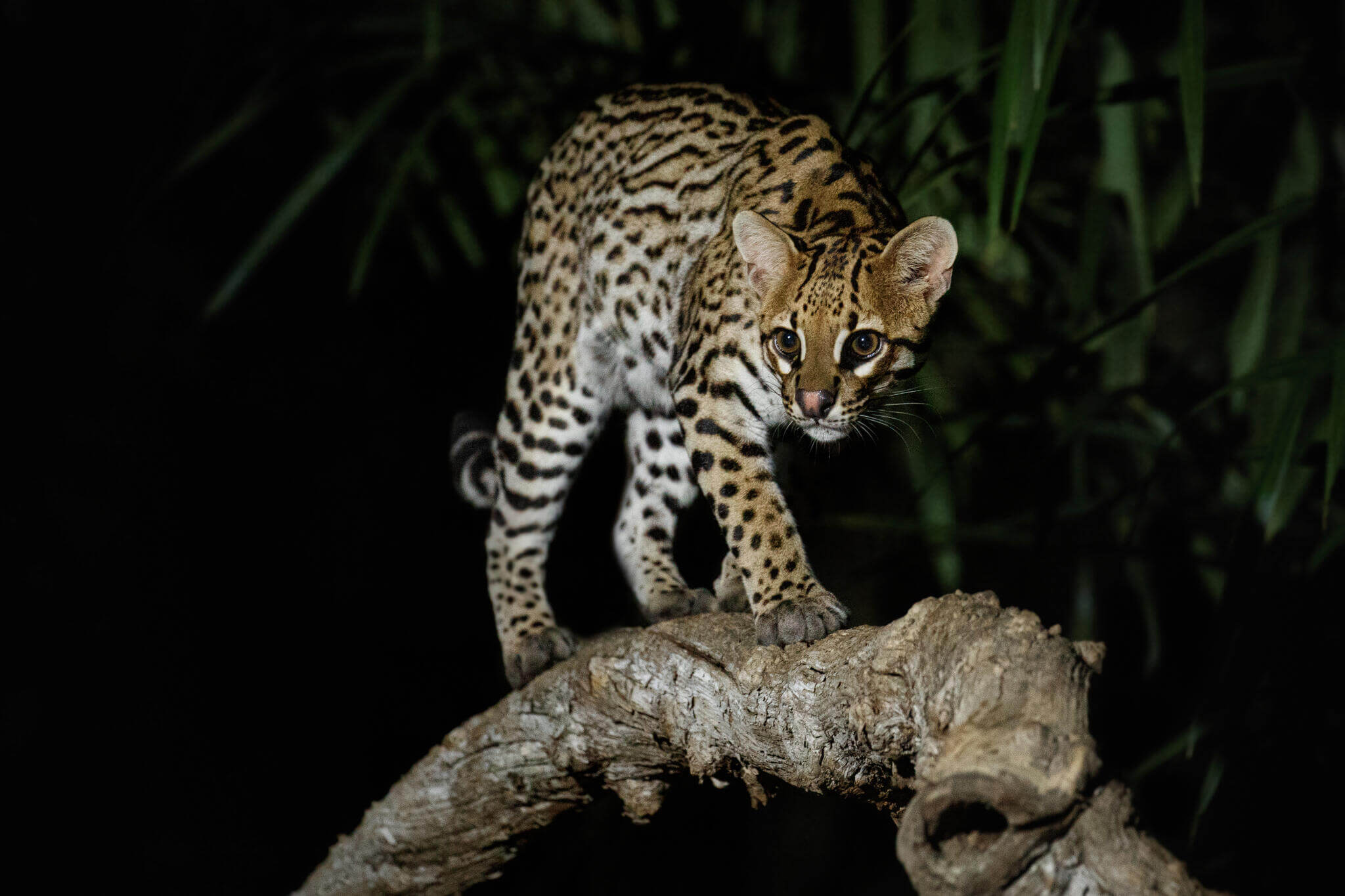
The ocelot is a wild feline found in several Latin American countries, including the following:
- Brazil
- Mexico
- Argentina
It’s a medium-sized animal with a mottled coat that varies in shades of yellow, brown, and black. Its elegant appearance and agility in hunting make it a formidable predator.
These felines prefer to inhabit tropical forests and areas of dense vegetation, where they hunt the following prey:
- Birds
- Reptiles
- Rodents
The IUCN Red List lists this species as “Least Concern.” Although they’ve experienced population declines due to deforestation and poaching, they can still be found in some protected areas. Conservation of its habitat is essential for its long-term survival.
4. Mountain Tapir (Tapirus pinchaque)
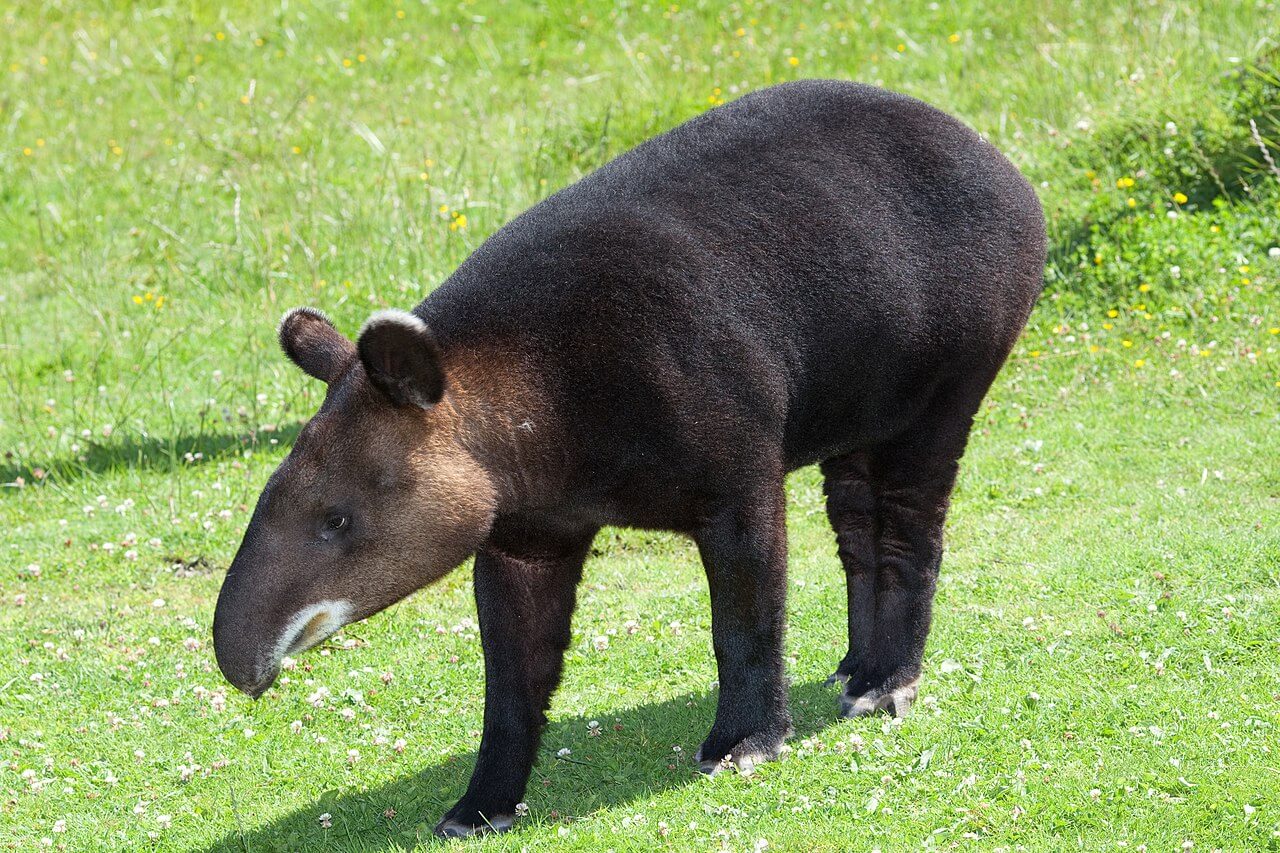
The mountain tapir – also known as the Andean tapir or the wooly tapir – is a species of herbivorous mammal found in the high mountain forests of the Andes in countries such as the following:
- Peru
- Ecuador
- Colombia
It’s the smallest and rarest tapir in the world, and its unique appearance distinguishes it from others of its species.
These animals have a robust body, thick fur, and an elongated trunk. They’re excellent swimmers, and their diet is based on the following foods:
- Leaves
- Fruits
- Sprouts
In addition, neotropical tapirs -such as the Tapirus pinchaque- play an important role in seed dispersal and in the structure of the forests they inhabit, as indicated in a study published by the Biological Journal of the Linnean Society in 2022.
In the IUCN classification, it’s listed as an “endangered” species.
5. The Caribbean manatee (Trichechus manatus)
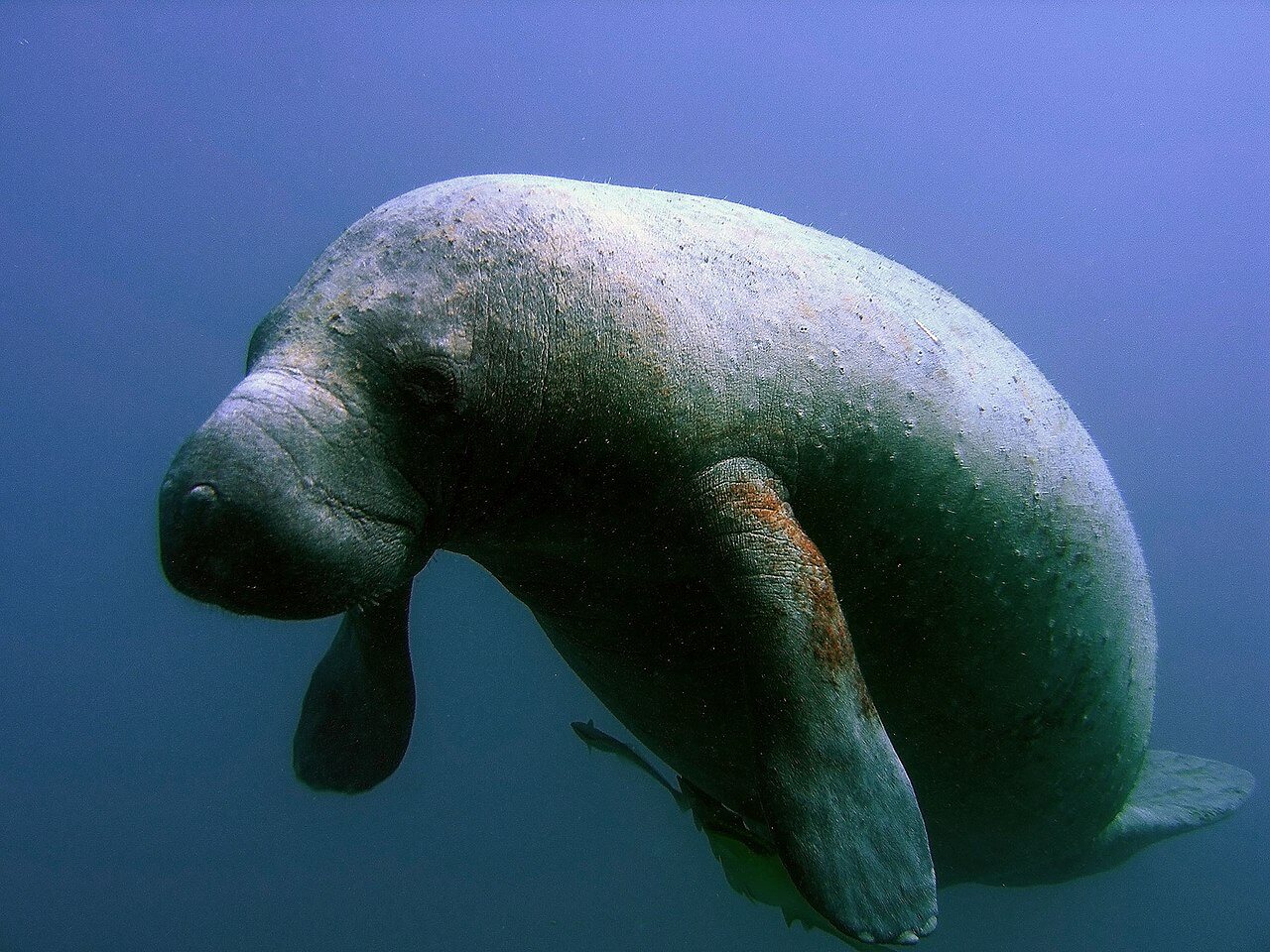
The Caribbean manatee is an aquatic mammal that inhabits the Caribbean coasts from Mexico to Brazil. These gentle giants are herbivores, that is, they feed on aquatic plants. They’re found in the following habitats:
- Rivers
- Lagoons
- Coastal waters
Manatees have bulky bodies and paddle-shaped flippers that are adapted for swimming and moving in aquatic environments. They’re animals that spend most of their time grazing in areas of aquatic vegetation.
They’re currently considered “vulnerable” by the IUCN, due to the following threats:
- Pollution
- Climate change
- The modification of its natural habitat
Unique and endangered animals
Latin America is home to an amazing variety of animals that are found nowhere else in the world. These examples only scratch the surface of the region’s rich biodiversity.
From exotic birds to iconic mammals, these species arouse our awe and admiration, but they also need our commitment to their protection. It’s essential that we take action to preserve their habitats. In doing so, we’ll ensure that future generations will also be able to marvel at the beauty of animals found only in Latin America.
Latin America is known for its rich biodiversity, which is reflected in the wide variety of animal species that inhabit the region. From majestic felines to colorful birds, there are species found nowhere else in the world.
This is due to a combination of geographic, climatic, and environmental factors. Its tropical and subtropical location, as well as its variety of ecosystems, provide ideal conditions for diversity. Join us to discover five species of animals that can only be found in this region!
The diversity of Latin American regions
Latin American geography has four major regions with their particular characteristics:
- Rainforests: The Amazon rainforests – located mainly in Brazil – also extend to Peru, Colombia, and Ecuador. They’re the green lung of the planet. It’s estimated that about 10% of all known species in the world are found in the Amazon.
- Cloud forests: Such as those found in Costa Rica, Panama, and Ecuador. They’re home to a large number of endemic species, such as the resplendent quetzal.
- Coral reefs: In the Caribbean and on the coasts of Central America are found these homes of marine life.
- Andean páramos: Located in the high Andes of countries such as Colombia, Ecuador, and Peru, these are high mountain areas that are home to species adapted to the cold climate and lack of oxygen, such as the mountain tapir.
Five animals endemic to Latin America
Latin America has many endemic species, i.e. animals that developed only under certain conditions specific to the region. It would be impossible to name them all, so we’ll list five of the most striking.
1. The Resplendent Quetzal (Pharomachrus mocinno)

The resplendent quetzal is an emblematic bird of Central America, known for its stunning beauty and colorful plumage. This bird is found in the cloud forests of countries such as Guatemala and Costa Rica. According to the Revista Mexicana de Biodiversidad, its total distribution ranges from Mexico to Panama.
Its body is predominantly green, with a bright red breast. It also has extensive and elegant tail feathers. In fact, males can measure over 3 feet in length.
For centuries, indigenous cultures have venerated the quetzal.
This bird is also a symbol of freedom and spirituality. However, due to deforestation of its range and illegal hunting, the International Union for Conservation of Nature (IUCN) classifies it as a “near threatened” species.
2. Hyacinth macaw (Anodorhynchus hyacinthinus)

The hyacinth macaw is endemic to the Pantanal region of Brazil, although it’s also found in some areas of Bolivia and Paraguay. Its most distinctive feature is its deep blue plumage. This feature makes it a unique and recognizable species.
These macaws inhabit forests and swampy areas, where they find the predominant foods in their diet, including:
- Fruits
- Nuts
- Seeds
The destruction of their habitat and capture for the illegal pet trade have led to a serious decline in their population.
According to the journal Wetlands, forest fires also play a critical role in population declines. In view of this, the IUCN classifies this bird as a “vulnerable” species, and consequently, conservation measures have been put in place to protect its survival.
3. Ocelot (Leopardus pardalis)

The ocelot is a wild feline found in several Latin American countries, including the following:
- Brazil
- Mexico
- Argentina
It’s a medium-sized animal with a mottled coat that varies in shades of yellow, brown, and black. Its elegant appearance and agility in hunting make it a formidable predator.
These felines prefer to inhabit tropical forests and areas of dense vegetation, where they hunt the following prey:
- Birds
- Reptiles
- Rodents
The IUCN Red List lists this species as “Least Concern.” Although they’ve experienced population declines due to deforestation and poaching, they can still be found in some protected areas. Conservation of its habitat is essential for its long-term survival.
4. Mountain Tapir (Tapirus pinchaque)

The mountain tapir – also known as the Andean tapir or the wooly tapir – is a species of herbivorous mammal found in the high mountain forests of the Andes in countries such as the following:
- Peru
- Ecuador
- Colombia
It’s the smallest and rarest tapir in the world, and its unique appearance distinguishes it from others of its species.
These animals have a robust body, thick fur, and an elongated trunk. They’re excellent swimmers, and their diet is based on the following foods:
- Leaves
- Fruits
- Sprouts
In addition, neotropical tapirs -such as the Tapirus pinchaque- play an important role in seed dispersal and in the structure of the forests they inhabit, as indicated in a study published by the Biological Journal of the Linnean Society in 2022.
In the IUCN classification, it’s listed as an “endangered” species.
5. The Caribbean manatee (Trichechus manatus)

The Caribbean manatee is an aquatic mammal that inhabits the Caribbean coasts from Mexico to Brazil. These gentle giants are herbivores, that is, they feed on aquatic plants. They’re found in the following habitats:
- Rivers
- Lagoons
- Coastal waters
Manatees have bulky bodies and paddle-shaped flippers that are adapted for swimming and moving in aquatic environments. They’re animals that spend most of their time grazing in areas of aquatic vegetation.
They’re currently considered “vulnerable” by the IUCN, due to the following threats:
- Pollution
- Climate change
- The modification of its natural habitat
Unique and endangered animals
Latin America is home to an amazing variety of animals that are found nowhere else in the world. These examples only scratch the surface of the region’s rich biodiversity.
From exotic birds to iconic mammals, these species arouse our awe and admiration, but they also need our commitment to their protection. It’s essential that we take action to preserve their habitats. In doing so, we’ll ensure that future generations will also be able to marvel at the beauty of animals found only in Latin America.
All cited sources were thoroughly reviewed by our team to ensure their quality, reliability, currency, and validity. The bibliography of this article was considered reliable and of academic or scientific accuracy.
- BirdLife Internacional. (2016). Pharomachrus mocinno. La Lista Roja de Especies Amenazadas de la UICN 2016: e.T22682727A92958465. Consultado el 12 de julio de 2023. https://dx.doi.org/10.2305/IUCN.UK.2016-3.RLTS.T22682727A92958465.en
- BirdLife International. (2016). Anodorhynchus hyacinthinus. The IUCN Red List of Threatened Species 2016: e.T22685516A93077457. Consultado el 12 de julio de 2023. https://dx.doi.org/10.2305/IUCN.UK.2016-3.RLTS.T22685516A93077457.en
- Deutsch, C.J., Self-Sullivan, C. & Mignucci-Giannoni, A. (2008). Trichechus manatus. The IUCN Red List of Threatened Species 2008: e.T22103A9356917. Consultado el 12 de julio de 2023. https://dx.doi.org/10.2305/IUCN.UK.2008.RLTS.T22103A9356917.en. Accessed on 12 July 2023.
- dos Santos Ferreira, B. H., da Rosa Oliveira, M., Rodrigues, J. A., Fontoura, F. M., Guedes, N. M., Szabo, J. K., … & Garcia, L. C. (2023). Wildfires Jeopardise Habitats of Hyacinth Macaw (Anodorhynchus hyacinthinus), a Flagship Species for the Conservation of the Brazilian Pantanal. Wetlands, 43(5), 47. https://link.springer.com/article/10.1007/s13157-023-01691-6
- Dumbá, L. C. C. S., Rodrigues, F. H. G., Maclaren, J. A., & Cozzuol, M. A. (2022). Dental occlusal surface and seed dispersal evolution in Tapirus (Mammalia: Perissodactyla). Biological Journal of the Linnean Society, 136(1), 23-40. https://academic.oup.com/biolinnean/article/136/1/23/6550529?login=false
- Lizcano, DJ, Amanzo, J., Castellanos, A., Tapia, A. & López-Málaga, C.M. (2016). Pinchaque tapires. La Lista Roja de Especies Amenazadas de la UICN 2016: e.T21473A45173922. Consultado el 12 de julio de 2023. https://dx.doi.org/10.2305/IUCN.UK.2016-1.RLTS.T21473A45173922.en
- Paviolo, A., Crawshaw, P., Caso, A., de Oliveira, T., Lopez-Gonzalez, C.A., Kelly, M., De Angelo, C. & Payan, E. (2015). Leopardus pardalis (errata version published in 2016). The IUCN Red List of Threatened Species 2015: e.T11509A97212355. Consultado el 12 de julio de 2023. https://dx.doi.org/10.2305/IUCN.UK.2015-4.RLTS.T11509A50653476.en. Accessed on 13 July 2023.
- Solórzano, S., García-Juárez, M., & Oyama, K. (2009). Genetic diversity and conservation of the Resplendent Quetzal Pharomachrus mocinno in Mesoamerica. Revista Mexicana de Biodiversidad, 80(1), 241-248. https://www.scielo.org.mx/scielo.php?pid=S1870-34532009000100026&script=sci_arttext&tlng=en
This text is provided for informational purposes only and does not replace consultation with a professional. If in doubt, consult your specialist.








